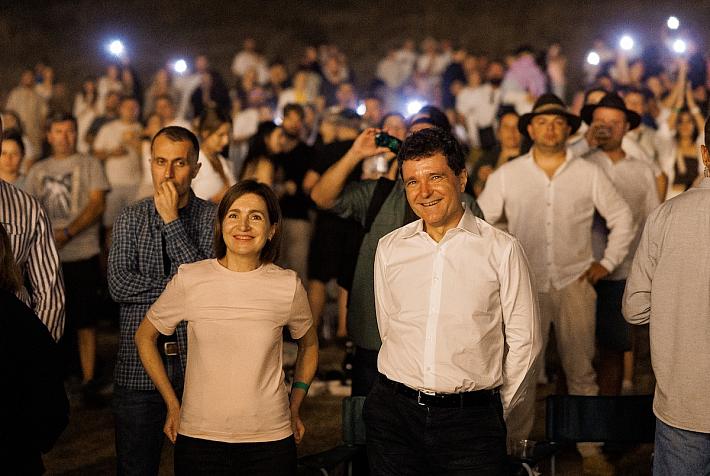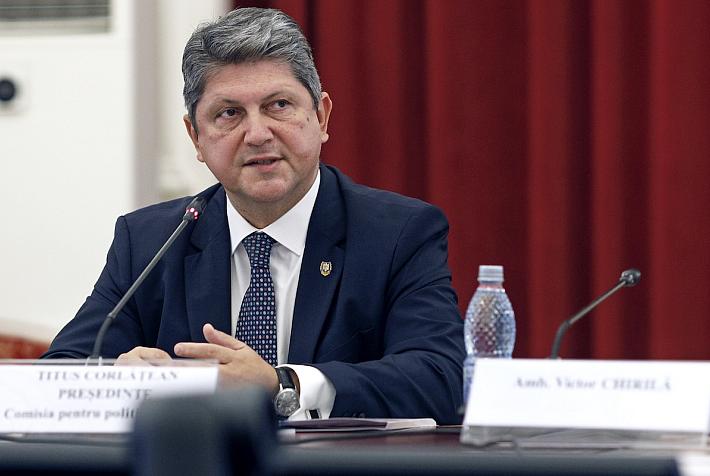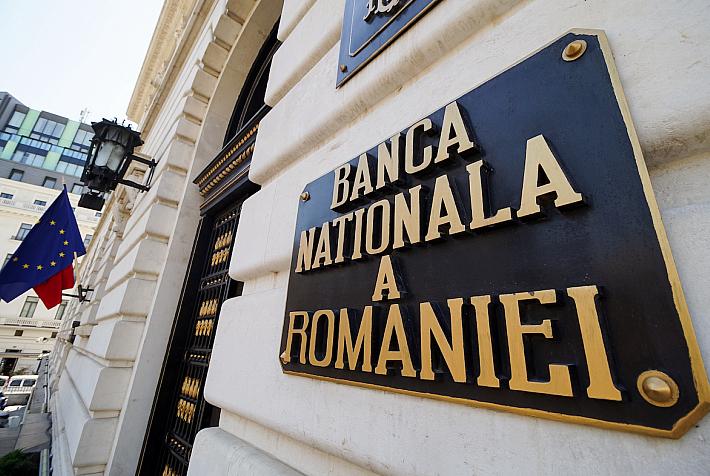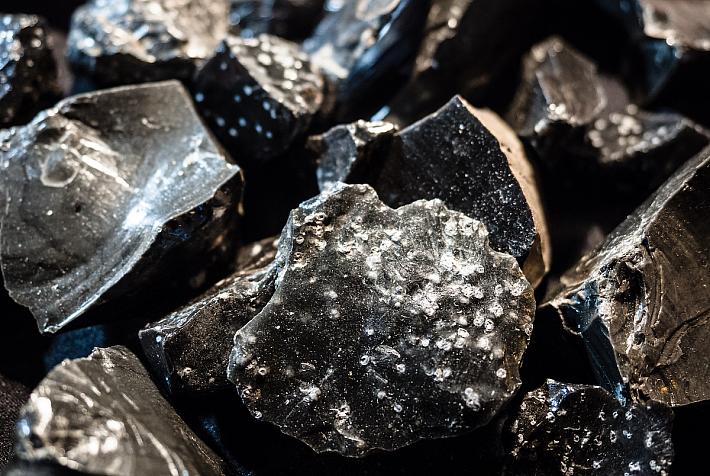Culture crossing: 10 Romanian-born artists abroad

The past century saw an entire series of Romanian-born artists and intellectuals taking their craft and pursuits outside of the country’s borders, mainly in France. Many of them are today claimed by the two cultures, while their works found a world-wide audience. Below are some of them, and the quick glance at their bios reveals many European and international connections.
Constantin Brâncuși (1876, Hobiţa, Romania—1957, Paris, France)
One of the best known Romanian artists to have lived outside of the country, Constantin Brancusi is considered a pioneer of modern abstract sculpture.
He started traveling in 1896, to pursue his artistic interests, and made various trips outside the country, including to Vienna and Munich, until 1904, when he entered the École des Beaux-Arts in Paris. In Romania he had attended the Bucharest School of Fine Art. His first Paris exhibition took place in 1906, at the state-sponsored Salon and then at the Salon d’Automne. In 1913 he displayed five works in the modern art exhibition Armory Show in New York, Chicago and Boston, among which the famous Mademoiselle Pogany. The exhibition introduced the public to such avant-garde styles as the Fauvism, Cubism, and Futurism. In time, Brancusi has found many collectors in the US and today US museums host many of his works.
In March 1951 the communist Romanian state rejected, on ideological grounds, an offer made by Brancusi to receive 200 of his works and his workshop in Paris. The Centre Pompidou in Paris now hosts an important number of the sculptor’s works, which it received instead. Brancusi acquired French citizenship in 1952 by a naturalization decree.
The Wisdom of the Earth (Cumintenia Pamantului) - pictured above is one of the most important Brancusi sculptures still on Romanian territory. The Culture Ministry recently re-negotiated to buy it for EUR 11 million. The sculpture is currently on display at the Cotroceni Art Museum.
Victor Brauner (1903, Piatra-Neamț, Romania - 1966, Paris, France)
Avant-garde painter and sculptor Victor Brauner trained at the Fine Arts School in Bucharest and initially painted in an expressionist style, later abandoned once he became involved with the Dada and the Surrealist movements. By 1930 he had moved to Paris, also to pursue his artistic career. Here he became friends with co-national Constantin Brancusi, but also with Yves Tanguy and Alberto Giacometti, sharing with the latter two the Moulin Vert Street residence. His first solo show in Paris took place at the Galerie Pierre in 1934, with the catalogue of the exhibition featuring an enthusiastic introduction written by André Breton. Tanguy and André Breton wrote an introduction for the catalogue of Brauner’s first solo show in Paris. After fleeing to the South of France at the beginning of the Second World War and later to Switzerland, he returned to Paris, where he remained until the end of his life.
One of his best known paintings is Self-portrait with enucleated eye, which would later turn real as the painter lost his left eye in an argument between Oscar Domínguez and Esteban Francés. In 1966 he represented France at the Venice Biennale, according to artnet.com.
Sergiu Celibidache (1912, Roman, Romania - 1996, La Neuville-sur-Essonne, France)
The conductor, composer, and teacher Sergiu Celibidache studied first at the University of Bucharest, before leaving in 1936 for Berlin, where he studied at the Music Academy (Hochschule für Musik). In August 1945, as the Berliner Philharmoniker’s chief conductor Wilhelm Furtwängler was not allowed to conduct for being suspected of having collaborated with the Natzi regime, the 33 year old Celibidache was appointed pro tempore conductor of the orchestra. He served in this position until 1952, when Furtwängler was rehabilitated, and conducted more than 400 concerts with the Philharmoniker. From 1979 until his death he was the music director of the Munich Philharmonic.
He is known for his preference for exploring the uniqueness of every concert and the adjacent ‘transcendent experience’ instead of making recordings.
Emil Cioran (1911, Rășinari, Romania—1995, Paris, France)
The Romanian philosopher and essayist Emil Cioran lived in France until his death, after moving there permanently in 1945. He studied at the University of Bucharest, where he received a degree in philosophy in 1932 with a thesis on French philosopher Henri Bergson. One year later he published his first book Pe culmile disperării (On the Heights of Despair), which won him the prize for young authors from the Romanian Royal Academy. Between 1933 and 1935 he was in Berlin as a fellow of the Humboldt Foundation and in 1936 he left for France with another scholarship.
Beginning with 1945 he starts writing in French and his first book written in French is published in 1949 at Gallimard, Precis de decomposition (A Short History of Decay). He wrote ten books in French, including La Tentation d’exister (The Temptation to Exist) and De l’inconvénient d’être né (The Trouble with Being Born). With the exception of the Rivarol award, granted for his French debut, he turned down all other literary awards offered to him.
Benjamin Fundoianu/ Benjamin Fondane (1898, Iași, Romania – 1944, Auschwitz-Birkenau (Oświęcim), Poland)
The Romania-born poet Benjamin Fundoianu was active in the country before moving to Paris in 1923, and was known as a Symbolist poet and columnist. Also while in Romania he established, together with director Armand Pascal, the avant-garde theater Insula. After moving to France, he became affiliated with the Surrealist movement and continued to publish in avant-garde magazines in Romania. He also wrote various interpretative and theoretical essays on modern poetry. He had multiple roles, including that of opinion journalist, critic, philosopher, translator, theater producer and screenwriter for Paramount Pictures.
He died at Auschwitz-Birkenau after he got arrested after being reported for his Jewish origins. Several of his friends, including Emil Cioran, reportedly intervened to save him but he refused to leave the Drancy camp, where he was being held, without his sister, whose release could not be obtained.
Mircea Eliade (1907, Bucharest, Romania—1986, Chicago, Ill., U.S.)
A Renaissance-type personality, Mircea Eliade was a leading scholar of religion and a fertile writer. He wrote more than 50 books, including novels, short stories and plays. Thirty of these were published in English.
After studying philosophy in Bucharest and in Calcutta, India, he got his PhD in philosophy in Bucharest in 1933. Until 1940 he taught at the University of Bucharest and during the Second World War worked as a cultural attaché at the Romanian Embassy in London (1940 -1941) and at the Romanian diplomatic mission in Lisbon (1941 -1945). Starting with 1945 he lived in Paris, where he taught history of religions at the École Pratique des Hautes Études and at the Sorbone. Beginning with 1956 he joined the faculty at the University of Chicago, where he taught until his retirement.
Considered one of the world's foremost interpreters of spiritual myths and symbolism, he spoke six languages and wrote fluently in three. The three-volume History of Religious Ideas (1978–1985) and the popular The Sacred and the Profane (1959) are among his best known, non-literary works.
George Enescu (1881, Liveni, Romania - 1955, Paris, France)
A child prodigy, George Enescu was the youngest student to be admitted to the Vienna Conservatory in 1888, at age seven. After graduating at 13, he went on to study at the Paris Conservatory, until 1899. In 1923 he made his conductor debut in the US with a Carnegie Hall concert with the Philadelphia Orchestra. He also conducted the New York Philharmonic between 1937 and 1938. After the Second World War and the Soviet occupation he remained in Paris.
A well-respected violin teacher, Enescu had Christian Ferras, Ivry Gitlis, Arthur Grumiaux and Yehudi Menuhin among his students. His only opera, Oedip, premiered in Paris in 1936 in Paris. Bringing influences of Romanian folk music into his work, Enescu wrote two Romanian Rhapsodies, five symphonies (two of them unfinished), the symphonic poem Vox maris, and many chamber music pieces.
An international music festival and an international music competition are held every two years in Bucharest in his honor.
Marcel Iancu/Marcel Janco (1895, Bucharest, Romania- 1984, Israel)
Visual artist and architect Marcel Iancu studied architecture in Zurich, where he was part of the group that would go on to establish the Dada movement. He was a co-founder of Contimporanul, the Romanian avant-garde magazine. He also lived for several years in Paris, where he become involved with the European artistic avant-garde.
He worked as an architect and many of Bucharest’s modernist buildings, to be found mostly in the northern part and the former Jewish quarter of the city, were built by him. Architecture was not his only art form however, as he did also illustration, sculpture and oil painting.
He left Romania in 1941, avoiding anti-Semitic persecution.
Eugene Ionescu/ Eugène Ionesco (1909, Slatina, Romania – 1994, Paris, France)
The Romanian-French playwright Eugene Ionescu was a principal name of the Theater of the Absurd. He was raised in France and Romania, where he obtained a degree in French from the University of Bucharest. In 1938 he left for Paris, where he worked as a cultural attaché of the Romanian government and began his doctoral studies. After 1945 he remained permanently in France, where he was made a member of the French Academy (L'Académie Française) in 1970. In 2009 he was declared a post-mortem member of the Romanian Academy.
He wrote several works in Romanian, such as the 1934 literary criticism volume Nu (No) or the 1943 play Englezeşte fără professor (English without a Teacher) but most of his works were written in French. His 1949 one-act “antiplay” La Cantatrice chauve (The Bald Prima Donna) introduced radical dramatic techniques and helped initiate the Theatre of the Absurd. It was followed by La Leçon (The Lesson), Les Chaises (The Chairs), Le Nouveau Locataire (The New Tenant), Rhinocéros (Rhinoceros), Le Roi se meurt (Exit the King), Le Piéton de l’air (A Stroll in the Air) or La Soif et la faim (Thirst and Hunger).
Tristan Tzara (1896, Moineşti, Romania— 1963, Paris, France)
The poet and essayist Tristan Tzara (born Samuel Rosenstock) is known as one of the founders of the Dada anti-establishment movement. A complex personality, he was a performance artist, journalist, playwright, literary and art critic, and film director. He studied Mathematics and Philosophy at the University of Bucharest but did not graduate. In 1915 he moved to Zurich and in 1919 to Paris, where he became part of the staff of Littérature magazine, the literary magazine edited by André Breton, Philippe Soupault, and Louis Aragon.
Some of Tara’s best known Dada texts are La Première Aventure céleste de Monsieur Antipyrine (The First Heavenly Adventure of Mr. Antipyrine), Vingtcinq poèmes (Twenty-Five Poems), and the movement’s manifestos Sept Manifestes Dada (Seven Dada Manifestos).
By Simona Fodor, Associate Editor, simona@citycompass.ro











